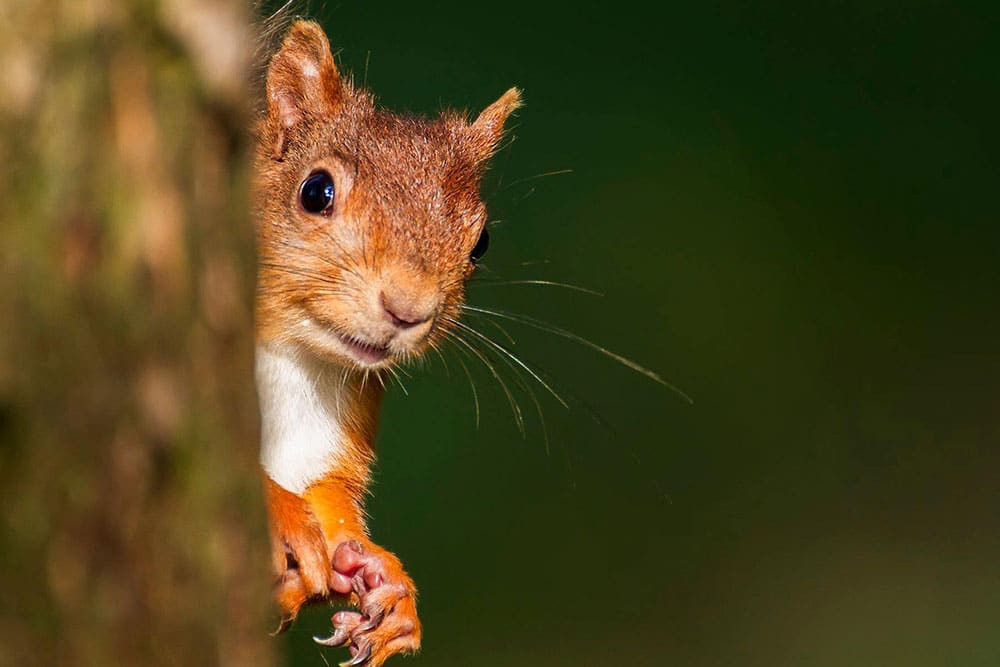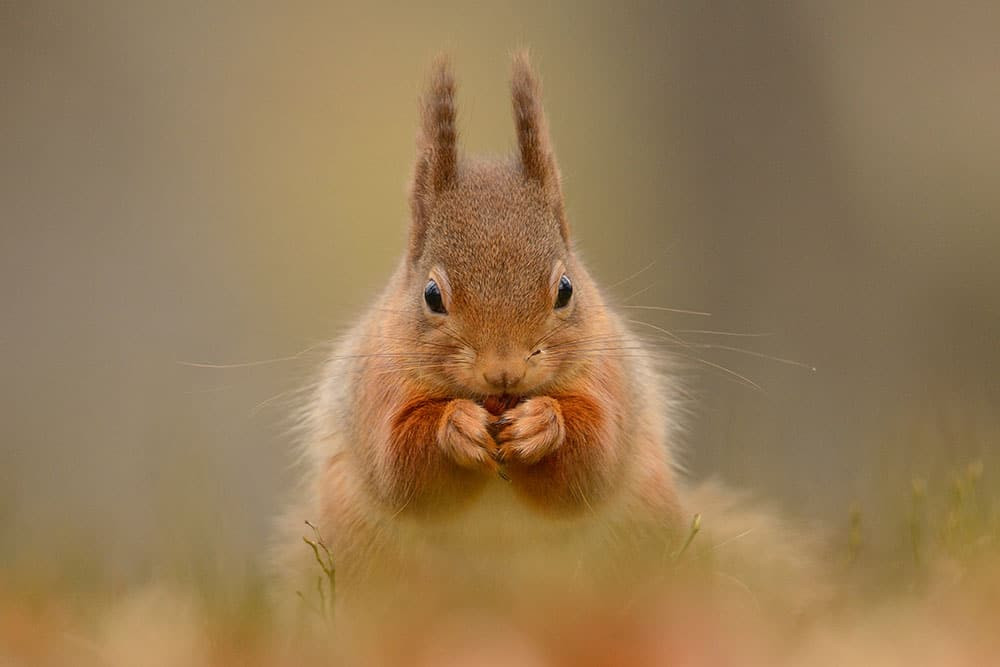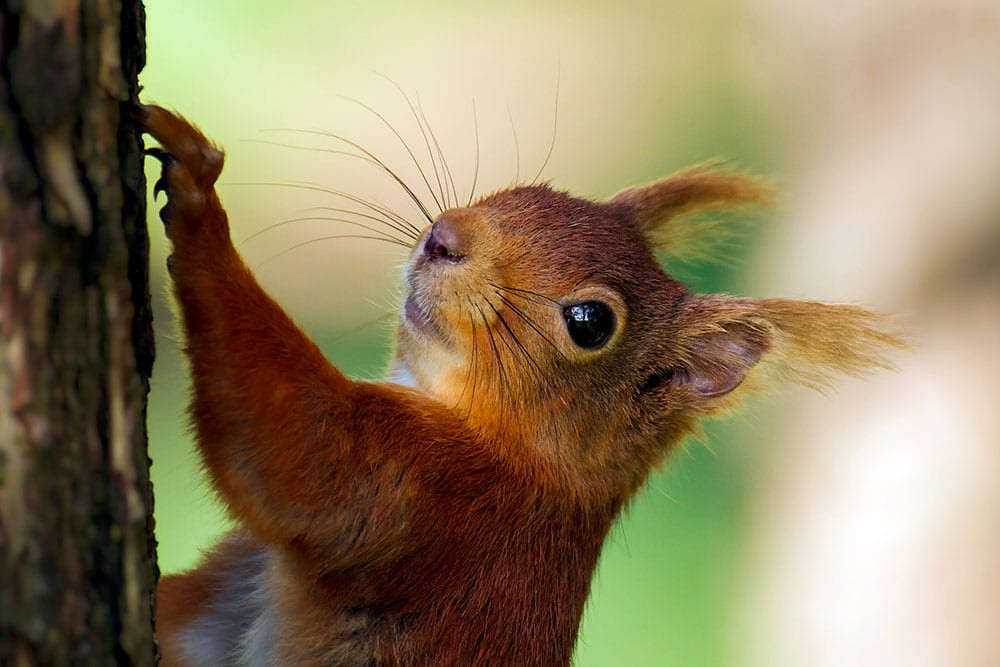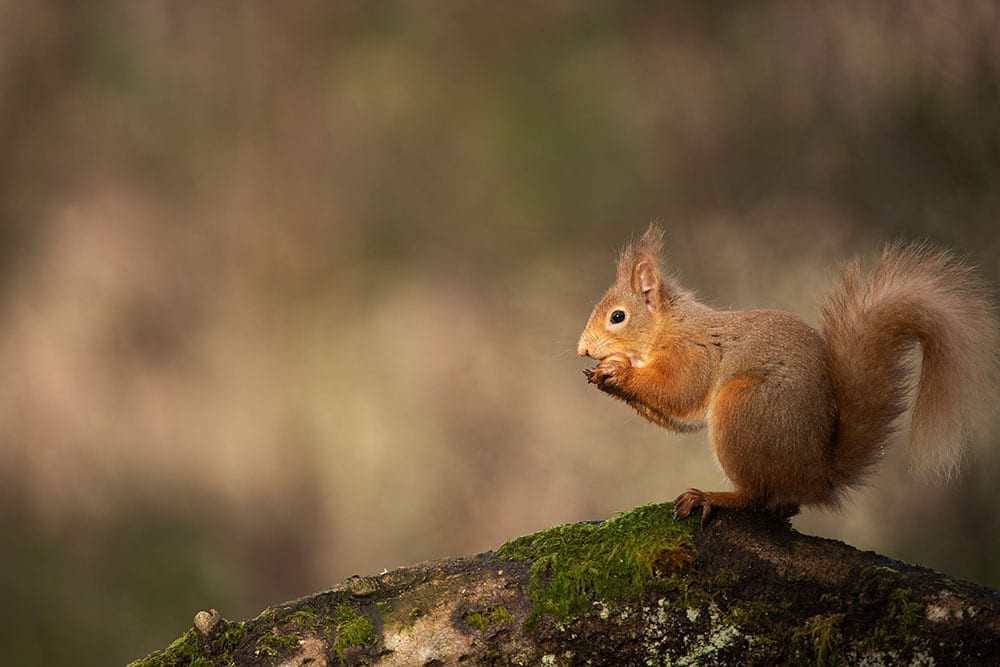Red resurgence
A fiery flash of red dashing through emerald green treetops… Even the most fleeting glimpse of a Red Squirrel is unforgettable, and the Lake District’s striking scenery and wooded valleys are home to a healthy population. Heather Dewey from RSPB Haweswater tells all about this handsome creature, forever immortalised through Cumbrian author Beatrix Potter’s Squirrel Nutkin character…

The ‘common’ squirrel?
Although the scientific name of this species, Sciurus vulgaris, refers to it being common (‘vulgaris’), the UK populations are in fact fragmented, and the species has been steadily declining. There are a number of causes, including woodland habitat fragmentation – but the most influential is the introduction of ‘squirrel pox’, brought across and transmitted by the North American Grey Squirrel Sciurus carolinensis. Where Grey Squirrels are carriers of this disease, but remain immune to its symptoms, Red Squirrels unfortunately are not – and the effects eventually lead to the untimely passing of those who contract it.
Grey and Red Squirrels also favour deciduous woodlands, so the larger Greys often provide an extra pressure in the form of competition for food and habitat. To put this in perspective, the Red Squirrel population is estimated at 200,000 individuals, but the Grey Squirrel populations is thought to be around 2.5 million.
However, the woodland canopies of the Lake District National Park are a wonderful place for Red Squirrels to call home, and constitutes one of their main English strongholds. Many individuals and charities are dedicated to managing woodlands as safe zones. There is also new hope for them in the shape of elusive Pine Marten; research is showing that reintroducing these woodland predators to the Lakes might help Red Squirrels by the Pine Martens’ preference for the bigger and more easily caught Grey Squirrels. You stand a good chance of spotting Reds around Ullswater (sometimes even in Another Place, The Lake’s grounds), and at Aira Force.

Woodland wanderers
These aerial acrobats are afforded the title of being an ‘arboreal’ mammal, meaning they spend as much, if not more, time in the trees as they do on the ground. Healthy, connected woodland habitats are therefore vital to support Red Squirrels, as they provide essential food, safety, dispersal opportunities and habitat for rearing young.
Being largely herbivorous, Red Squirrels forage on a mixed diet of nuts (hazel and beech being particularly tempting), fruits, mushrooms, seeds and even the bulbs, flowers and shoots of plants. They’re also partial to adding variety to their diet in the form of invertebrates and, on occasion, birds’ eggs.

In search of Red Squirrels
Their dainty bodies can be spotted darting through broadleaf, conifer, or mixed woodlands, with telltale feeding signs and footprints left behind to look out for when searching for them. One such sign can be found in forests with coniferous trees, where they have an endearing habit of leaving piles of de-seeded fir cones on tree stumps – like corn husks haphazardly piled on top of a tiny dining table.
Bushy tails and tufted ears are two top identification features of the animal itself, with a red coat being its obvious trademark. However it’s worth noting that Red Squirrel coats can vary seasonally, and between individuals, and are often tinged with grey in winter.
As squirrels are diurnal (active during the day), and spend around 70% of the day busily foraging, you’re quite likely to spot them during your explorations in natural spaces, if you’re lucky enough to be in the right place, at the right time. Different populations can acquire local activity patterns, depending upon factors such as human presence, food availability, and the threat of predators – however most tend to be, quite literally, bright eyed and bushy tailed as the sun starts to rise and they head out in search of breakfast.
As well as Ullswater, RSPB Haweswater enjoys a Red Squirrel population so strong, that individuals even pop by to nibble on the occasional sunflower seed on our first floor office bird feeder.
Haweswater’s Naddle Forest is an undisturbed and protected habitat, so is a particular stronghold of importance for this beautiful animal. An abundance of natural food sources are available throughout the seasons, from new plants and invertebrates in spring, to hazel crops and mushrooms in autumn, just in time to ‘cache’ for essential winter stores. As Red Squirrels don’t hibernate, these food caches are important to help them through the harsh winter conditions.

Heather Devey is Visitor Development Officer at RSPB Haweswater. For more information on the RSPB’s work and events at Haweswater, visit wildhaweswater.co.uk, or follow them on Twitter at @WildHaweswater
Look out for the launch of a new Woodland Wildlife Hide at RSPB Haweswater, established and managed by Wild Intrigue, later this year, where Red Squirrels are expected to be the star attraction.
Discover Ullswater and explore the surrounding Lake District.
Book your stay at Another Place.